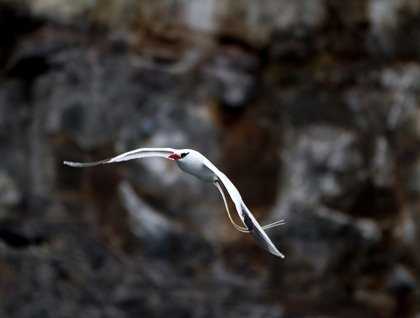This morning, we started our day of exploration early! We boarded kayaks and we headed to the rocky shore of Genovesa. This island is very interesting because the shore and the anchorage are inside a nearly perfectly circular crater. The inner part of the crater is a vertical cliff made of layers of basalt with a lot of cracks and crevices and some small lava tubes. This particular feature of the cliff determines the presence of sea birds of all types and sizes. This was the early beginning and it was a very exiting starting moment.
Later, in the middle of the morning, we landed at the beach in Darwin Bay. Here we visited a large colony of sea birds. This island seems to be a magnet for these organisms; they range from the small storm petrels to the large Nazca boobies. We also saw land birds such as Darwin’s finches, mockingbirds and yellow crowned night herons.
The trail is just white sand because we explored the beach with its salt bushes, mangroves, and cliffs. All over here you find life. Most of these birds are nesting and we saw eggs and tiny chicks on the different nests. Here in this same place we had the opportunity to stay at the beach and also to explore the shallow water with snorkeling gear. We found lots of fish including sharks and sea lions!
In the afternoon we had a number of options as well! The young explores took Zodiac driving lessons, and the rest of us landed on a different place for another walk. Here we explored a large colony of Nazca boobies throughout the Holly Stick, or Palo Santo forest. Our destination was the colony of storm petrels. But the highlight here certainly was the presence of some short-eared owls! This seasoned hunter is very well camouflaged among the brown lava rocks. This is how it hunts its prey. Finding it represent a challenge. But today we found them.
It was a great day, great weather, superb. This is the best way to end an expedition in the Galápagos Islands.







